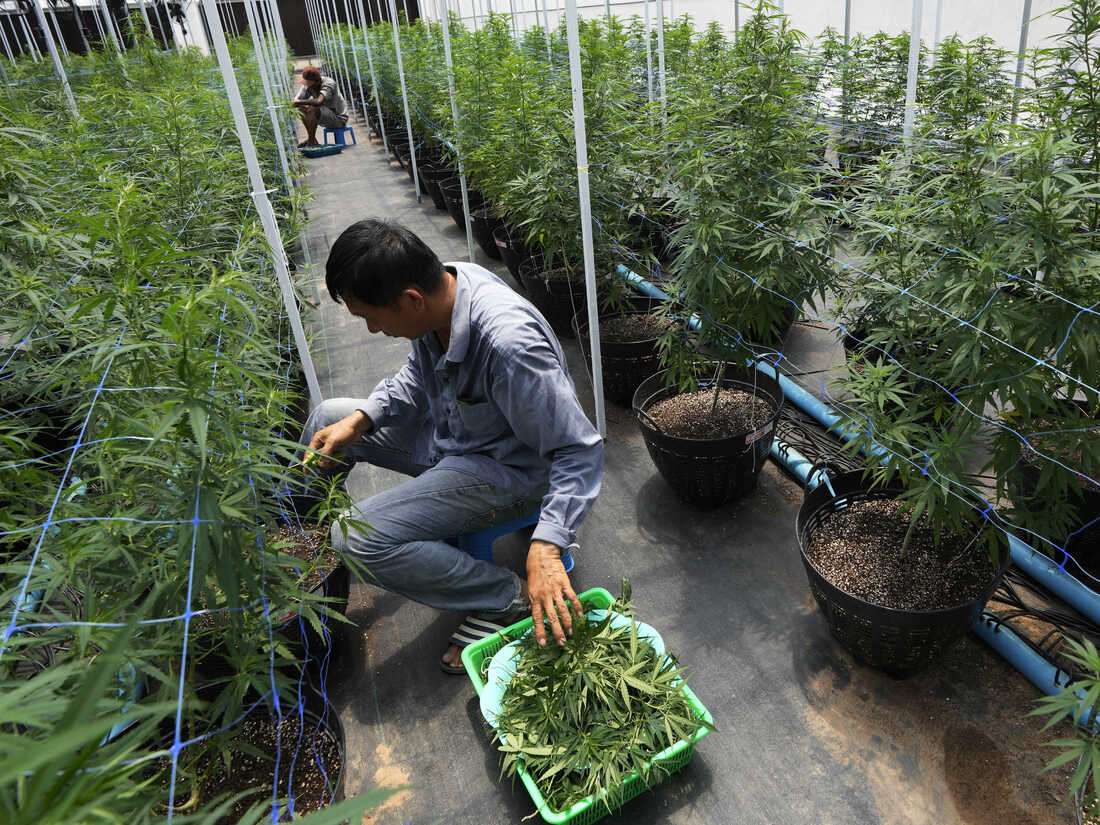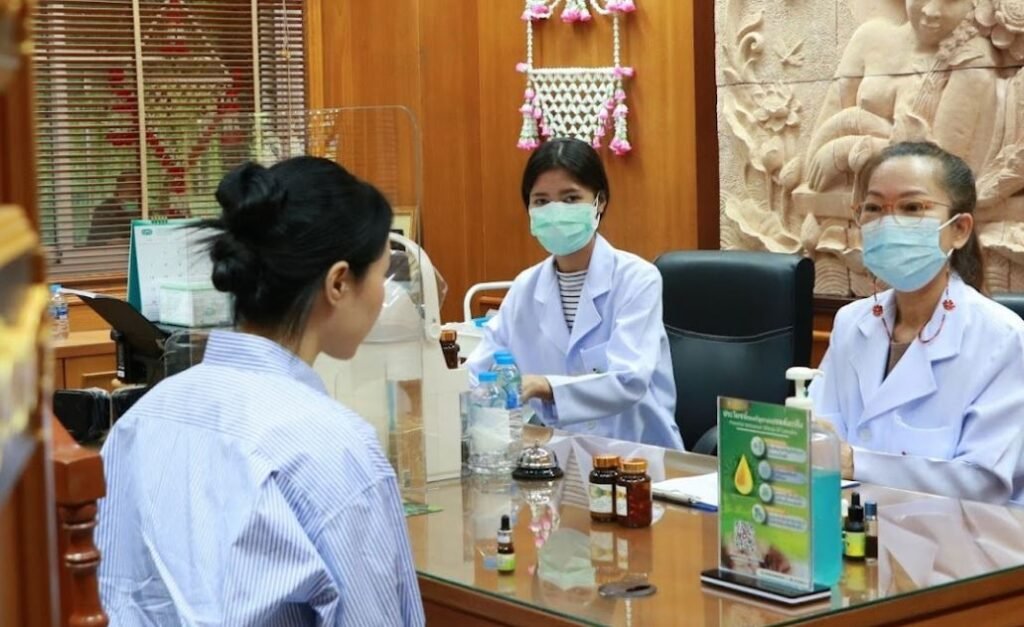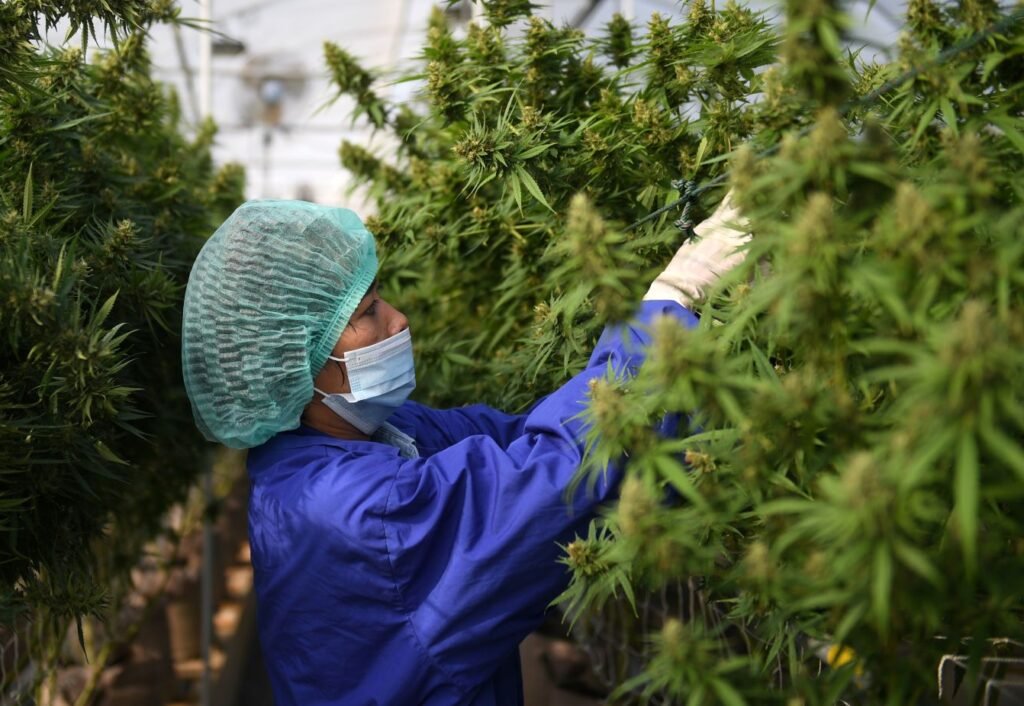On the 25th of December 2018, Thailand’s the National Assembly of Thailand unanimously approved marijuana (cannabis) and Tetrahydrocannabibinol (THC) for medical use and research. [1] The legislature passes amendments to the Narcotic Act of 1979 during an extra parliamentary session for a series of bills before the New Year’s holidays. It is the second Asian country to do so after South Korea in November 2018.
The adopted legislation, while still prohibiting unlicensed production and distribution of Schedule 5 narcotics, allows its use and procurement in cases of necessity, use by government authorities, medical treatment, and R&D. This extends to licensed agricultural, commercial, scientific, or industrial activities authorized by the Narcotics Control Board and other relevant agencies. Patients using or in possession of medical marijuana products can freely travel throughout the country unhindered if they have a certificate from an authorized medical professional or traditional medicine practitioner. Thai people and tourists are now allowed to apply for cannabis treatment of their approved medical condition. [2]

To apply for a license as an individual, they must be a Thai national who resides in Thailand. For corporations applying for a license, they must be registered and incorporated under Thai law with their headquarters located in Thailand. The ownership ratio of these corporations must consist of 2/3 Thai-to-foreign shareholders and directors. [2] Unlicensed production and distribution were still prohibited under Schedule 5 narcotics, allowed is the use and procurement in cases of necessity, use by government authorities, medical treatment, and R&D. This extends to licensed agricultural, commercial, scientific, medical, pharmaceutical, Thai Red Cross Society or industrial bodies authorized by the Narcotics Control Board and other relevant agencies. This has increased the investment revenue for marijuana (cannabis) research and development coming into Thailand since 2019 to this day.
Similar to Malaysia, Cannabis use in Thailand has prolonged for hundreds of years. It is theorized that cannabis was introduced to Thailand from India. Cannabis leaves and extract were traditionally used as medicine (especially for the elderly) and as a food supplement containing vitamins, minerals and fiber. Cannabis or hemp fibers were commonly used to produce textiles, clothing and rope before it’s prohibition in 1934. Industry advocate Kitty Chopaka shares that ganja (cannabis) used to be grown by the older Thai generation in their home garden next to green chiretta and sea holly. The dried herb was most commonly used in teas and tinctures. Laborers used the versatile plant as a muscle relaxant, pain reliever and women used it to alleviate labor pain. Such experiences are bound to be shared by Malaysians from that time period as well. [3]
History of Cannabis in Thailand
The government of Thailand first prohibited the trade and sale of cannabis in 1912 after signing the International Opium Convention in the Hague. It was thought at that time that opium cultivation was linked to cannabis cultivation without substantiation. When cannabis was prohibited, farmers and distributors depending on the cannabis industry were not able to immediately change the cash crop that they based their livelihoods on. This drove the cannabis industry underground and unregulated production and sales flourished.
During the Vietnam War in the 1960s and 70s, Thai farmers introduced the infamous cannabis strain “Thai Stick” to American soldiers stationed at or vacationing in Thailand. Thai Sticks were cured cannabis flowers and leaves on a bamboo stick skewer, wrapped in fan leaves and held together with hemp string. [4] It became an instant hit and the demand created by the American soldiers and vacationers made the Thai Stick a globally sought after strain. Consequently, Thailand became one of the world’s largest illegal cannabis exporters for most of the ’70s and early ’80s.
Moving forward three decades later, the push towards legalizing medical marijuana started in 2015 and attracted a sizable following in 2018–2019 when the elected political party made implementing the policies a priority for the general election held in March 2019. [5] Thai Health Minister Anutin Charnviraku who proposed the legalization of medical marijuana stated that the move would help boost the country’s ailing economy, particularly its agricultural sector.
“Thailand will promote cannabis policies for medical purposes. If [tourists] come for medical treatment or come for health-related products then it’s not an issue but if you think that you want to come to Thailand just because you heard that cannabis or marijuana is legal … [or] come to Thailand to smoke joints freely, that’s wrong.” he said. [6]
Thailand’s tropical climate makes for an ideal place to cultivate the plant — and the government has taken steps to establish it as a cash crop. His proposal was proven correct as the Thailand Medical buying clenbuterol online in australia cannabis industry reached a value of USD 26.3 million in 2020 and USD 80.3 million in 2021 with over 800 clinics across the country dispensing Cannabis products. [7]

Survey of Medical Marijuana usage
From a survey involving 400 medical marijuana patients conducted by the Prince of Songkla University, Department of Epidemiology, it is known that users most commonly used cannabis products in oral form of crude oil extract making up 84.7% of patients while 9.2% used cannabis in its raw form (flowers, leaves or whole plants with roots and stems). The main diseases medical marijuana is used for are to treat cancers 23.3%, neuropsychiatric symptoms 22.8%, and musculoskeletal pains 21.6%. Before marijuana was decriminalized in 2022 most users got their cannabis from illegal sources. Cannabis is believed by the users to be able to treat cancer, chronic pain and insomnia. [5] While there has been research to prove CBD/THC can treat chronic pain, more medical research needs to be done to assess it’s effectiveness against cancer.
From the respondents of the survey which I continue to sample from, 22% had previously consumed cannabis for other purposes before their consumption for medical purposes. The duration of current consumption for medical purposes was 10.5 months (range 7–828 days) on average. Two-third of the respondents (68.8%, 95% CI [61.4–76.2]) consumed it almost every day or many times a day every day, with 72.6% (95% CI [64.9–80.2]) reporting the same pattern of consumption since the beginning of medical use. Most respondents (79.1%, 95% CI [69.3–89.0]) reported their conditions had improved after they started using cannabis.
Some local users are concerned about the efficacy of the official products. Following health regulation, some patients in Thailand believe the painkilling attributes of government-sanctioned cannabis oil are not sufficient, and prefer to purchase from the illegal market for stronger doses when addressing more severe conditions. The current allowed THC concentration is 0.2% which some users and campaigners say is too little. Medical dispensaries in the US are known to sell products up to 15% depending on the required prescription, while unregulated cannabis oil can go as high as 80%. [8]
On the 11th of May 2019, two dedicated clinics Bangkok Integrative Medicine (BIM) Poly Clinic and Sawasdee Clinic started dispensing cannabis oil joining many other general clinics which were already operating on a part time basis. They dispense CBD and THC oil and pills that include products from the Government Pharmaceutical Organization (GPO). The cannabis oil and pills were made available at state-run hospitals in August 2019 and are provided free of charge to those eligible for the government universal health care program. According to the Ministry of Health’s list of approved medical conditions, patients with addiction withdrawal symptoms, allergies, Alzheimer’s disease, bronchitis, cancer, diabetes and HIV/AIDS are among those who can use cannabis and THC-containing products for treatment. [10]

South Korea and Thailand led the way for the acceptance and legalization of medical marijuana with government license. The aforementioned Thai government harbors ambitions to move up in the global cannabis market, estimated to reach $48 billion by 2027. In accordance with that, they also decriminalized leaves, branches, bark fiber, root and hemp plants, allowing businesses to use these raw materials for products including food, drinks and cosmetics.
“The attitude is that it’s already a part of traditional medicine … and we should ensure that Thais can control their own industry,” said Jim Plamondon, Marketing Head of Thai Cannabis Corporation to Reuters on the reasons of legalization. Prohibition Partners said that “In Western markets, recreational cannabis is expected to outperform medicinal cannabis in market forecasts, but in Asia the opposite is likely to be true.” [11]
An example for Malaysia
After the critical commercial and medical successes in Thailand since 2019, the then Malaysian government started studies, research into the potential use of medical marijuana. [11] In our opinion, the legislation for medical marijuana and Kratom should be expedited by the unity government led by Prime Minister Dato Seri Anwar Ibrahim as soon as possible. Developments in Thailand and other countries have undoubtedly shown that granting the use of medical use of marijuana and kratom derived products brings health benefits and potentially more effective treatment at a lower cost than current available medicine.
Legalization would bring business and economical benefits to the local industry. Cannabis farms and processing facilities are required to produce the supply of medical marijuana products. If set up locally, many new job opportunities will be created. Yet another benefit to Thailand’s economy is from medical tourism that has significantly increased because many foreigners are seeking medical marijuana for treatment. Probably the simplest and best step progressing towards legalization is for the government to follow the suggested amendment by the World Health Organization (WHO) in 2020 to reduce cannabis from Schedule 1 to a lower Schedule 3 that will allow local hospitals and universities to research and study the plant and all its components. This is to further strengthen the already visible evidence from other countries so that Malaysians can access the required medical products and spark a budding industry to serve the growing domestic and global markets.
References
- Olarn, K., & Goldschmidt, D. (2018, December 25). Thailand approves medical marijuana. CNN. Retrieved January 17, 2023, from https://edition.cnn.com/2018/12/25/health/thailand-medical-marijuana-bn/index.html
- Mendiola, J. (2019, January 28). Thailand’s Cannabis Legislation: A Brief Summary | Silk Legal. Silk Legal. https://silklegal.com/thailands-new-cannabis-legislation-a-brief-summary/
- Lambert, L. C. (2021, October 11). Thailand’s Cannabis History and Modern Evolution. MGMagazine – Cannabis News & Information. https://mgmagazine.com/business/growing-horticulture/thailands-cannabis-history-and-modern-evolution/
- What Are Thai Sticks? Overview, Benefits, Risks. (n.d.). Leafwell. Retrieved January 17, 2023, from https://leafwell.com/blog/thai-sticks/
- Assanangkornchai, S., Thaikla, K., Talek, M., & Saingam, D. (2022). Medical cannabis use in Thailand after its legalization: a respondent-driven sample survey. PeerJ, 10, e12809. https://doi.org/10.7717/peerj.12809
- Olarn, K., & Chen, H. (2022, June 9). Thailand just decriminalized cannabis. But you still can’t smoke joints, minister says. CNN Travel; CNN. https://edition.cnn.com/2022/06/09/asia/thailand-cannabis-legal-minister-interview-intl-hnk/index.html
- Thailand Medical Cannabis Market Report 2021: A $26.3 Million Market in 2020 – Industry Trends, Share, Size, Growth, Opportunity and Forecast to 2026. (2022, February 21). GlobeNewswire News Room; Research and Markets. https://www.globenewswire.com/en/news-release/2022/02/21/2388398/28124/en/Thailand-Medical-Cannabis-Market-Report-2021-A-26-3-Million-Market-in-2020-Industry-Trends-Share-Size-Growth-Opportunity-and-Forecast-to-2026.html
- Kamolvattanavith, T. (2021, October 28). Medical Marijuana Is Legal in Thailand, but People Are Sticking With the Black Market. Www.vice.com; VICE Media Group. https://www.vice.com/en/article/akvzz5/medical-marijuana-thailand
- Marijuana & Cannabis Clinics in Thailand. (n.d.). Cannabis for Thailand. Retrieved January 18, 2023, from https://cannabisforthailand.com/marijuana-cannabis-clinics-in-thailand/
- Shao, G. (2019, July 14). Medical cannabis is gaining momentum in Asia. CNBC.com/World/; CNBC. https://www.cnbc.com/2019/07/15/medical-cannabis-is-gaining-momentum-in-asia.html
- Loshewar, R. (2021, November 9). Khairy: Medical marijuana can be used in Malaysia if it passes national regulations. Malay Mail.com; Malay Mail. https://www.malaymail.com/news/malaysia/2021/11/09/khairy-medical-marijuana-can-be-used-in-malaysia-if-it-passes-national-regu/2019592

